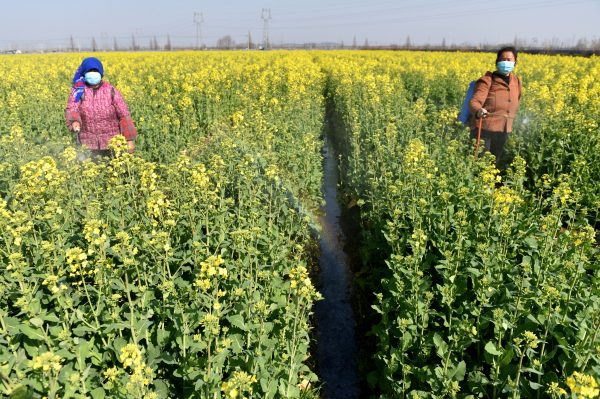Poverty alleviation is important in 2020. This is a benchmark year — China’s socialist experiment is supposed to deliver a ‘moderately well-off society’ in 2020 before making the big push towards a ‘modern socialist country’ by 2035 and a ‘modern socialist power’ by 2050. 2020 also sees the end of the 13th Five-Year Plan period, with next year marking both the beginning of the 14th Five-Year Plan period and the centenary of the CCP. These two years are significant milestones in the context of the economic development story of rural China.
The tone of this year’s document reverts to aggregate thinking. This is unlike documents of previous years which had shown real policy innovation in proposing small solutions to tackling soluble rural problems.
‘Rural’ in China does not simply mean ‘agricultural’. The CCP land administration system makes a clear distinction between urban and rural land, resulting in a vast nationwide zoning system analogous to crown land and private property in common law jurisdictions.
In 2018, a national strategy on rural revitalisation emerged in that year’s ‘No 1 Central Document’ and has since become the guiding rural development ideology. The goal of the strategy is to move the urban economic growth model from coastal cities into rural hinterlands. This requires transforming the economic and legal basis of half of China’s population — currently classified as ‘rural’ — who do not have property rights or access to social services under the current system. This rural–urban public administration divide means that another country effectively exists within China.
But the ambitious expansion of industrialisation into the hinterland has been proffered with rhetoric-laden policy bereft of innovation or practical solutions to the rural–urban divide. This year’s ‘No 1 Central Document’ papers over institutional gaps left from ‘reform era’ policy and fails to articulate what ‘new era’ policy will look like. Further, the major themes of poverty alleviation and rural governance detract from important rural land and finance reform issues.
Unfortunately for the rural population, meaningful reform is dependent on land and finance reform, which have stalled. There is currently no indication of how future land reform would operate under a pricing model. And there is still no plan for extending the industrial economy’s financing system into rural areas.
Central bank monetary policy in China generally conforms to an impossible trinity. It dictates that a government can choose any two of three policy options: fix the exchange rate, open the capital account or engage in independent monetary policy. China’s rural policy faces a similar impossible trinity: maintaining growth, ensuring stability and guaranteeing prices.
Reading this year’s document through the prism of rural growth, stability and prices, an underlying policy tension emerges. This tension represents a modern economic reconception of the original ‘three rural issues’ of agricultural production, rural economic underdevelopment and peasant incomes.
Historically, while urban China centred its attention on growth, rural China was mired in stability and price control problems. Urban China abandoned price controls to shore up stability and growth during the reform period but now faces an asset-price correction of global proportions. The national strategy on rural revitalisation is an attempt to move the urban growth model to the countryside. But due to this urban growth model and existing rural price controls, the government risks letting go of stability.
Indeed, rural stability supported the development of urban China through the reform period, both as the agricultural base and as a steady source of cheap labour.
Last year, stability was a major governance theme as the CCP struggled to articulate its legitimacy in the face of lower economic growth figures and the creeping possibility of a no-growth future. Growth was the legitimacy mantra of the CCP throughout the 40-year reform period. But where growth has succeeded in delivering urbanisation, industrialisation and a new consumer class, it has also bred an apathy in the cities that economically developed first. That means that growth is no longer sufficient to ensure political legitimacy. And to the rural world it represents their separation from the economic development narrative.
The pricing reward for rural areas was that land and food remained accessible to all. From cabbages to housing, prices remain the greatest single source of legitimacy in China and the greatest risk for legitimacy collapse. The rural revitalisation policy model is set to break this status quo by bringing the industrial growth model down to the countryside, but at this stage there is no clear policy plan for shoring up stability or prices for rural people. There are no easy policy fixes for China’s ‘three rural issues’ or the trilemma of stability, growth and prices. But widening the policy debate to include a range of solutions is surely better than narrowing the scope for possible success.
Tristan Kenderdine is Research Director at Future Risk.

